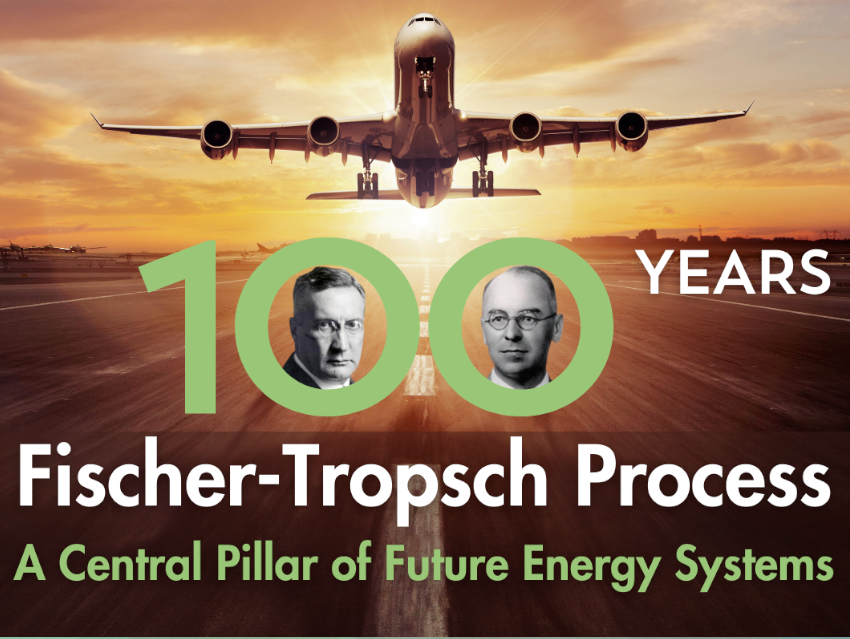A Central Pillar of Future Energy Systems
The decarbonization and defossilization of the global energy system requires an effective interface between electricity as the primary form of energy with molecular energy carriers and chemical products. In July 1925, the two chemists Franz Fischer and Hans Tropsch patented a process that 100 years later provides a major contribution to address this challenge and holds tremendous opportunities still for innovation.
Their fundamental research revealed that a mixture of the gases carbon monoxide and hydrogen could be transformed over suitable catalysts into liquid and solid hydrocarbons: the “Fischer-Tropsch Synthesis” was born. The CO/H2 gas mixture known as syngas can be generated from virtually any source of carbon and hydrogen, and the process had a multifaceted history using coal or natural gas as alternative to crude oil. Today, the prospect is to generate syngas from biomass or from CO2 and water with electricity from carbon-free technologies, opening “Power-to-X” pathways to fuels for mobility in hard to electrify sectors and to feedstocks for the chemical industry.
The conference will reflect the most recent developments in technology and application, and highlight fundamental progress in the understanding and improvement of the catalytic reaction. The scientific program will be placed in the context of the historical development and feature platforms to discuss the societal and environmental prospects of the Fischer-Tropsch Process for sustainable energy systems.
Speakers Include
- Enrique Iglesia, University of California at Berkeley/USA
- Martin Keller, National Renewable Energy Laboratory (NREL)/USA
- Xiulian Pan, Dalian Institute of Chemical Physics (DICP)/CN
- Andrea Ramírez Ramírez, Delft University of Technology/NL
Event Details




